LandTiger Baseboard
Overview
The LandTiger v2.0 is not a baseboard in the sense that it can host an mbed module. The board is however rather compatible to mbed LPC1768 hardware and software and provides alot of onboard resources. The board is produced by PowerMCU and available from several vendors on ebay and other webstores. The average cost is about $70 for the board, a 3.2inch 320x240 TFT LCD, powersupply and some cabling.
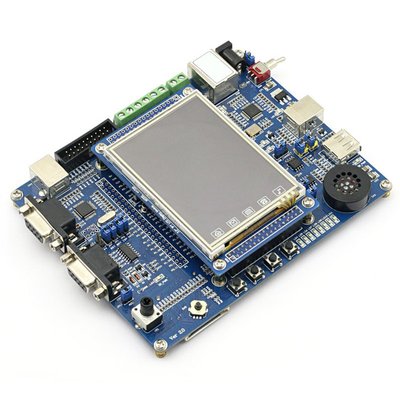
High res picture is here
Features
- 2 RS232 serial interfaces (using straight-through serial cable), (RS232 Transceiver: SP3232). One serial port supports ISP download of programs.
- 2 CAN bus communication interfaces (CAN Transceiver: SN65VHD230).
- RS485 communication interface (485 Transceiver: SP3485).
- RJ45-10/100M Ethernet network interface (Ethernet PHY: DP83848).
- DAC output interface, on-board speaker and speaker output driver (LM386).
- ADC input interface, on-board adjustable potentiometer input.
- Color LCD display interface (supports 2.8-inch or 3.2-inch color TFT 320X240). Touchscreen supported through SPI interface.
- USB2.0 Interface (USB host and USB Device interface).
- SD/MMC card (SPI) interface.
- I2C Interface, connected to onboard 2Kbit EEPROM (24LC02).
- SPI serial interface connected to onboard 16Mbit Flash (AT45DB161D).
- 2 user keys, 2 function keys (INT0 and Reset button).
- 8 LEDs (Digital outputs).
- Five-way joystick button (Digital Inputs).
- Serial ISP download support.
- Standard JTAG download, simulation debugging interface.
- Integrated JLINK compatible emulator (USB): supports online simulation and debug capabilities (KEIL, IAR and other mainstream development environments).
- External 5V power supply or USB input to provide 5V power supply.
- Breakout available for all the IOs for external application development circuits.
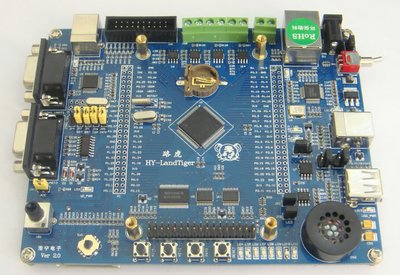
High res picture is here
Compatibility
The LandTiger features the LPC1768. The onboard hardware supports ISP to download mbed code (using bin2hex and Flashmagic). Alternatively, binaries can be downloaded using the onboard JLINK JTAG/SWD emulator or an external JTAG programming device.
Serial port COM1 (UART0) supports mbed messaging to/from the host PC as usual. USB host and device functions are supported with minimal changes needed to the regular mbed software. Ethernet PHY is identical and minimal change is needed to run the official mbed ethernet code.
DigitalIn, DigitalOut, BusIn, BusOut, CAN, PWMOut, AnalogIn and AnalogOut from the mbed lib work fine. You can optionally use the onboard amplifier and speaker for AnalogOut. The I2C, SPI and other interfaces are pretty standard and mbed library code should run with no or minimal change (currently still testing this).
A nice feature is that all of the LPC1768 pins are available on the breakout connectors. That allows use of pins that are not accessible on mbed. Note that the onboard hardware, drivers etc can be disabled as required by removing (soldering out) the appropriate 0-Ohm resistors. Checkout the schematic for details.
The main differences compared to mbed are:
- board does not show up on your PC as mass storage device USB stick
- No support for downloading the bin to the mass storage, must use ISP or JTAG
- No support for serial port over the USB link, must use COM1 RS232 or USB device port
- No support for the local filesystem
- No support for the four mbed LEDs, you may use the other LEDs on the board
Warning
There is a potential hardware problem in the switched powersupply for USB Host function. P1.22 is used to detect that power is on. This pin should be configured as DigitalIn. However, when the pin is accidentally configured as DigitalOut and pulled low it will result in a short when USB Host power is on. I have removed the 0 Ohm resistor R78 to disconnect P1.22. You could also replace it by a higher value (e.g. 10K) to prevent this problem.
A second problem is that USB Host power can not be switched on and off by P1.19 when used as a DigitalOut. Power will switch on at logic level low, but is does not switch off again at high level. I have used P1.19 as DigitalInOut and switch between input() and output() set to low. The power LED LD15 may be used as indicator.
Warning
It seems that Ticker is no longer functional when J-Flash is still connected after flashing the LPC1768. The correct procedure for J-Flash is: load the new bin file, select target/connect, select target/auto, select target/start application. The code will then execute. If you just flash and then press the hardware reset button it seems that Jlink disables/corrupts Ticker. This will not even recover after a powercycle.
Display
The 320x240 pixels LCD color display HY32D is based on an SSD1289 controller. The display may be removed from the mainboard. It uses an 8 bit databus (P2_0..P2_7) and also needs several controllines from the LPC1768. A touchscreen controller is also provided on the displaymodule. Interfacing between touchscreen and LPC1768 is done using SPI. (Currently still testing the LCD). The code below is a simple graphics lib and demo code which was mashed up from Keil and internet sources. The lib supports primitives like draw lines, circles, rectangles and pixels. It also supports printf() style formatted strings with a 24x16 font. It is certainly not fully tested nor optimised. According to the copyright notice you are probably only allowed to play with it using the Keil offline compiler.
Import programTiger_LCD
Landtiger (LPC1768) graphics LCD demo.
Make sure that the reported controller ID is 8989 for the SSD1289. Any other ID indicates that your LCD board has a different controller. You will then have to change the GLCD_config.h file.
Some pics are below.
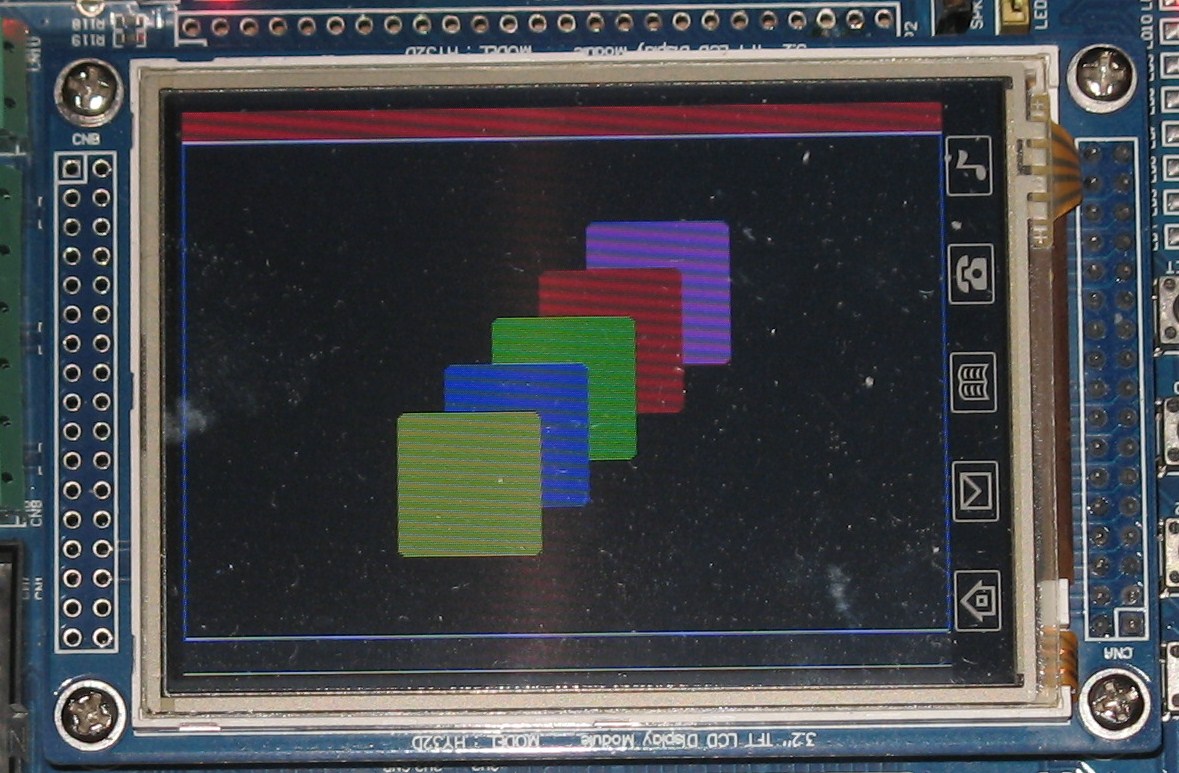
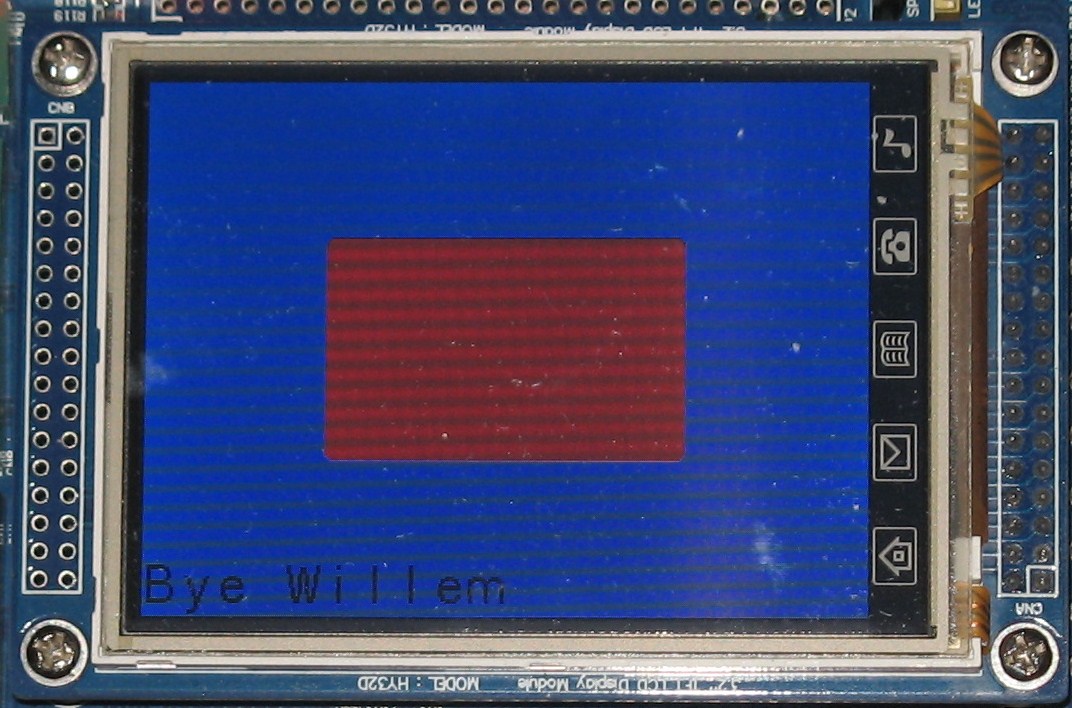
References
Documentation CD provides schematics, datasheets and software examples. Board manual was minimal and unfortunately all in Chinese, I have prepared an English version, including hints regarding mbed compatibility (see link below).
- Schematics /media/uploads/wim/landtiger_v2.0_schematic.pdf
- Manual (Second Draft)
- Product review Video (by WayEngineer)
- Product review Video in French (by skywodd)
23 comments on LandTiger Baseboard:
Please log in to post comments.

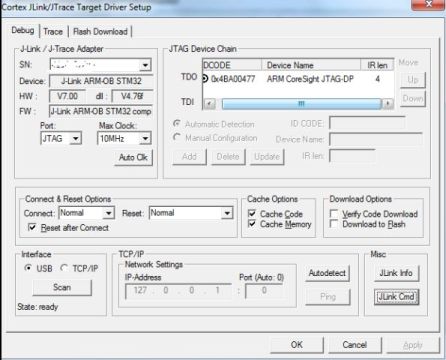
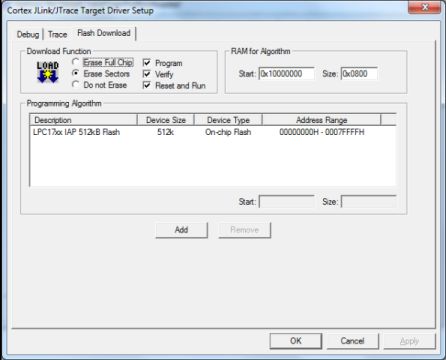




Your link to the manufacturer is broken, but I guess direct link to the product should be: http://www.hotmcu.com/nxp-lpc1768-v20-devboard-32tft-color-lcd-jlink-on-board-p-7.html?cPath=1_21
Only 60 dollars is a really nice price for such a board.